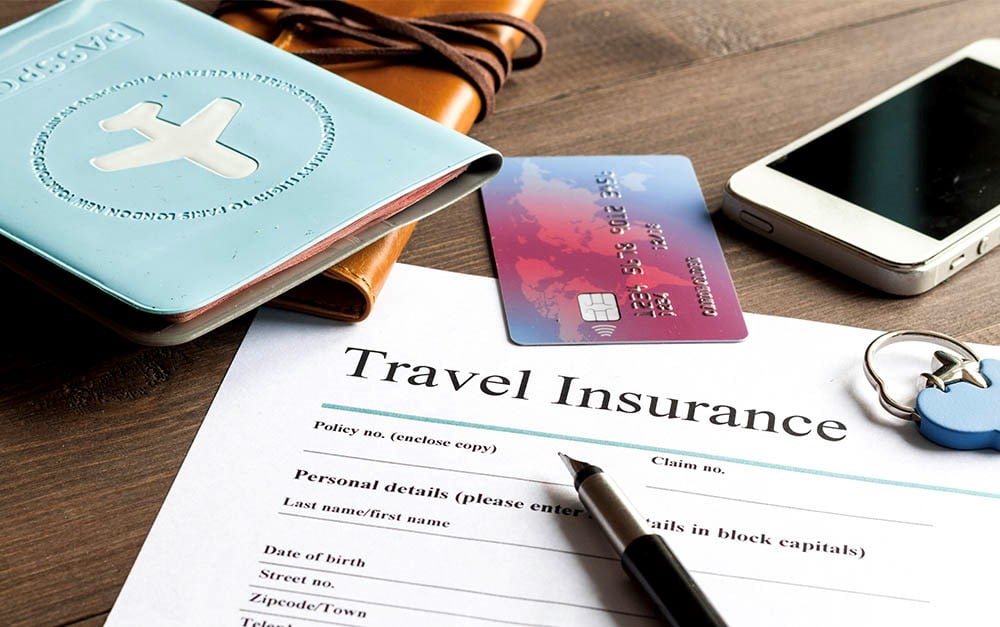Planning a getaway in 2025? Between skyrocketing flight prices and those bucket-list dreams pulling you abroad, the last thing you want is a surprise expense derailing the fun. Travel insurance isn’t just a checkbox—it’s your safety net for everything from flight hiccups to health scares. With Americans shelling out more on trips this year, figuring out the cost of travel insurance is smarter than ever.
Why This Matters Now
Travel’s back with a vengeance, but so are the curveballs: think wild weather, global health worries, and prices that hit your wallet hard. In 2025, the average American trip clocks in around $7,900—up 7% from last year—and that’s got folks rethinking how to protect their hard-earned cash. Whether you’re eyeing a quick beach escape or an epic European jaunt, understanding travel insurance costs helps you budget without skimping on peace of mind.
Background & Importance of Travel Insurance
Why Americans Need It
Life’s unpredictable, and trips amplify that. Imagine dropping $5,000 on a family vacation only to have a storm ground your flight or a sudden illness force a cancellation. Travel insurance steps in to cover those non-refundable hits, from hotel deposits to medical bills abroad where U.S. plans often fall short. It’s not about paranoia; it’s practical. Families safeguard memories, solo adventurers dodge solo disasters, and business travelers keep deals on track. In a year when 50% of Americans have snagged a policy at least once, it’s clear: skipping it could cost way more than buying it.
Current Relevance in the USA
Stateside, travel insurance is booming amid a travel renaissance. With outbound leisure trips surging and the market hitting $7.71 billion this year, it’s no wonder—60% of travelers faced disruptions last year, from weather woes to delays. Globally, the vibe’s similar, but for Americans, it’s personal: higher medical evac costs (up to $50,000 minimum recommended) and pricier international jaunts make coverage a must. As remote work blurs lines between work and wanderlust, more folks are insuring hybrid trips, turning what was once optional into essential.
How Travel Insurance Works
The Basics Explained
At heart, travel insurance is a contract that reimburses you for covered mishaps before, during, or after your trip. You pay a premium upfront (say, 4-6% of your trip cost), and in return, the insurer covers claims like canceled flights or lost bags. File online or via app with receipts, and payouts hit your account fast—often within days. It’s not a get-out-of-jail-free card for everything, but it handles the big stuff, like emergency meds or trip interruptions, so you focus on the fun.
Who It’s For
This isn’t one-size-fits-all. Travel insurance suits families bundling kid-friendly coverage, seniors prioritizing medical evac, or adrenaline junkies adding adventure riders. Budget backpackers grab basics for cheap peace; luxury seekers opt for high-limit plans. If you’re American heading overseas—where healthcare can bankrupt you—or domestic road-tripping through hurricane alley, it’s tailored for you. Even credit card holders with perks use it to fill gaps.
Core Elements of Travel Insurance
Every solid travel insurance policy packs these essentials to keep you covered:
- Trip Cancellation/Interruption: Reimburses prepaid costs if you bail for covered reasons, like illness or job loss—up to 100-150% of your trip.
- Emergency Medical: Pays doctor visits or hospital stays abroad, often $50,000-$500,000 per person.
- Medical Evacuation: Covers flights home or to better care, typically $100,000-$1 million limits.
- Baggage Delay/Loss: Cash for essentials if bags vanish, plus replacement value up to $2,500.
- Travel Delay: Hotel or meal reimbursements after 6-12 hour waits, around $500-$1,000.
- 24/7 Assistance: Hotline for everything from lost passports to local docs.
These building blocks flex with add-ons like “cancel for any reason” for ultimate flexibility.
Advantages of Travel Insurance
Beyond the numbers, travel insurance delivers real wins that make trips smoother and stress-free. It’s like having a travel buddy who foots the bill when plans go sideways. Here’s why it’s a game-changer:
- Financial Safety Net: Recoup thousands on canceled honeymoons or medical emergencies—average claims hit $370 for delays alone.
- Health Confidence: U.S. plans rarely cover overseas care; this fills the void, especially for chronic conditions with waivers.
- Peace of Mind Boost: Know you’re backed for weather woes or family emergencies, letting you unplug fully.
- Quick Claims Process: Digital filing means faster payouts, often 10-14 days, versus months with hassles.
- Custom Fit: Add riders for cruises, sports, or pets, tailoring to your adventure without overpaying.
- Value Multiplier: At 4-6% of trip cost, it protects investments that could otherwise wipe out savings.
Take a family of four on a $10,000 Disney dash—insurance turned a flu-forced cancel into a full refund last year, turning tears into a rescheduled win.
Challenges or Limitations of Travel Insurance
Sure, travel insurance shines, but it’s not flawless. Spotting the snags early keeps expectations real:
- Exclusions Galore: No coverage for “known events” like pandemics declared pre-trip or high-risk hobbies without riders.
- Pre-Existing Condition Hurdles: Waivers need early buys (14-21 days post-booking); otherwise, chronic issues might not qualify.
- Claim Denials: Paperwork slip-ups or uncovered reasons (like voluntary cancels) lead to rejections—15% of claims get bounced.
- Age Premiums: Over 70? Expect 2-3x hikes due to risk, though caps help.
- Deductibles Bite: Some plans ding $100-$500 upfront, eating small claims.
Shoppers, double-check fine print and buy early to sidestep these. Pair with trip trackers for smoother sails.
Recent Trends in Travel Insurance for 2025
2025’s travel insurance scene is evolving fast, mirroring our wilder wanderlust. Demand spiked 14% last year, fueled by pricier trips and disruption fears—think 44% blaming weather for woes. Key shifts? Selective bundles rule: 35.8% of buyers snag 1-2 targeted perks over full packages, saving cash while covering must-haves like medical (up in adoption). Annual plans glow at $0.86/day for multi-trippers, a steal versus single policies. Tech’s in: AI chats for instant quotes, parametric payouts for delays (no receipts needed), and eco-riders for sustainable stays. Hurricane forecasts? Insurers push early buys for severe seasons. Women and boomers lead uptake, with claims up 15% on weather delays. Bottom line: smarter, greener, and bite-sized coverage fits 2025’s vibe.
Market Comparison: Travel Insurance vs. Alternatives
Travel insurance holds its own against freebies like credit card perks or no-coverage gambles, but let’s weigh it quick. Standalone policies edge built-ins for depth, while skipping altogether risks ruin—average medical evac? $50,000+. Credit cards cover basics (delays, baggage) but cap low ($500) and skip meds.
- Vs. Credit Card Perks: Cards like Chase Sapphire offer $10,000 evac but no cancels; travel insurance triples limits and adds illness coverage.
- Vs. Annual Multi-Trip: Singles cost $20/day; annuals drop to $0.86—ideal for frequent flyers, though trip limits hover lower.
- Vs. Medical-Only Plans: Basics run $4.53/day sans cancels; full travel insurance bundles for 4-6% total, worth it for all-in-one.
- Vs. No Insurance: Free upfront, but one delay claim averages $370 out-of-pocket—policies pay back 100% on covered hits.
For most, dedicated travel insurance wins on comprehensive value, especially abroad.
Cost & Value Factors of Travel Insurance
What Influences Pricing and Affordability?
The cost of travel insurance isn’t random—it’s a mix of your details and choices. Core driver? Trip cost: expect 4-6% baseline, so $5,000 jaunt = $200-300. Age amps it—millennials pay $179 average; seniors 2x more for risk. Add travelers: families see per-head drops but totals climb. Length matters: longer trips hike daily rates slightly. Coverage depth? Basics skim 4%; CFAR adds 40-50%. Destination risk (USA high at $50,000 min med) and season (hurricane hikes) nudge prices. 2025’s inflation? Up 7% on trips, so premiums follow.
How to Find the Best Value
Hunt value by comparing apples-to-apples—use marketplaces for 20+ quotes in minutes. Skip fluff: insure only non-refunds. Annuals shine for 3+ trips/year at under $1/day. Weigh limits: $250,000 med beats skimpy cards. Reviews flag claim speeds—aim for 4.8+ stars. Early bird? Buy 53 days out for cancels, saving on rushes. Bundle with flights? Some carriers embed cheaply, but check gaps.
Tips for Making the Right Choice
Nailing travel insurance boils down to your story—here’s how to pick without regret:
- Match Your Trip: Domestic drive? Basic delay focus. Overseas? Prioritize $100,000+ evac.
- Compare Quotes: Input details on sites for side-by-sides; aim for 4-10% of costs.
- Read Exclusions: Hunt waivers for pre-conditions; add CFAR if flexible plans tempt.
- Check Add-Ons: Adventure? Rider up. Pets? Include boarding.
- Eye Claims Rep: 24/7 lines and app filing beat phone mazes.
- Buy Smart: Within 14-21 days of deposit for full perks; annual for repeaters.
Test with a sample quote—your future self’s high-five awaits.
Mistakes to Avoid with Travel Insurance
Even savvy travelers trip up—here’s the pitfalls and fixes:
- Waiting Too Long: Miss waivers or cancels? Buy within 21 days of booking to lock perks.
- Under-Insuring Costs: Forgetting excursions? List every non-refundable dime to avoid shortfalls.
- Ignoring Destinations: USA trips need $50,000 med min—scale for risks like cruises.
- Skipping Reviews: Shiny ads lure; check claim denial rates under 10%.
- Overlooking Renewals: Annuals lapse? Set reminders to avoid gaps.
Dodge by quoting early and triple-checking—simple saves headaches.
Future Outlook for Travel Insurance
By late 2025 and into 2030, travel insurance is set to explode—market to $16 billion at 15.9% CAGR, thanks to AI personalization and embedded sales (airlines bundling at checkout). Parametric shifts: auto-payouts for delays via weather APIs, no fuss. Sustainability riders cover carbon offsets; VR claims let you “show” damage remotely. High-risk spots? Dynamic pricing via real-time data. Boomers’ longevity means senior-tailored plans; Gen Z pushes mental health adds. Expect 80% uptake by 2030 as disruptions normalize—smarter, faster, greener coverage ahead.
Final Thoughts
From $200 averages for $5,000 trips to trends like targeted medical bundles, travel insurance costs in 2025 boil down to smart picks that fit your wallet and worries. We’ve unpacked the why (sky-high trips), how (core covers like evac), and must-avoids (late buys), arming you for worry-free wanders. It’s more than policy—it’s permission to dream big.
So, quote up, cover smart, and hit the road. Travel responsibly: declare conditions honestly, claim only covered hits, and support locals ethically. Your next adventure’s waiting—what’s your first stop?



